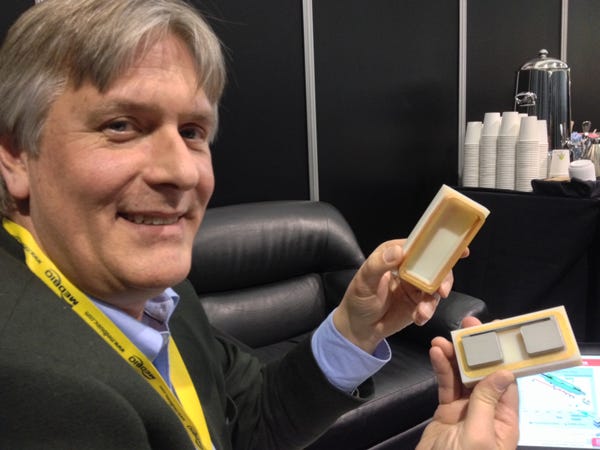What to Do with a Really Tiny Reed Switch
March 26, 2014
Coto Technology is ramping up production in May of a microelectromechanical systems (MEMS) reed switch that is only about 1-by-1 mm in size. But what would it be good for in the medical device field?
The answer turns out to be a lot, William Gotschewski, vice president of sales and marketing at Coto (North Kingstown, RI), told MPMN at BIOMEDevice Boston on Wednesday.
The tiny reed switch, for example, can be used with pill-sized endoscopy camera devices, Gotschewski said. Specifically, a magnet in the box containing the pill cam uses the read switch to keep the device turned off--ensuring it can be stored for extended periods of time without running out of juice.
Because the reed switch only responds to magnetic fields coming from specific directions, it can ensure that a device such as an insulin pump doesn't accidently discharge insulin if a diabetic, say, is using a power drill emitting its own magnetic field, Gotschewski said.
|
William Gotschewski, VP of sales and marketing at Coto Technology, shows off a model of a reed switch prototype that is actually 1-by-2 mm in size. Coto is now producing reed switches that are 1-by-1 mm in size. |
In the past, reed switches consisted of stamped nickel-iron blades and a sealed glass tube. In contrast, the new Coto Technology component is manufactured using microlithography, creating a tiny mold on silicon and then using the mold to create the actual ruthenium switch.
A metal cantilever bridges two electrically isolated metal blocks that act as magnetic field amplifiers. A small gap between the cantilever and one of the blocks allows magnetic flux from an external magnet to build up, pulling the cantilever into electrical contact with the block.
Besides years fine-tuning the manufacturing process, Coto also had to come up with a secret, proprietary metal used at the point of content, Gotschewski said.
The goal is to now create millions of the switches in coming years, according to Gotschewski.
Chris Newmarker is senior editor of MPMN and Qmed. Follow him on Twitter at @newmarker.
About the Author(s)
You May Also Like


.png?width=300&auto=webp&quality=80&disable=upscale)
